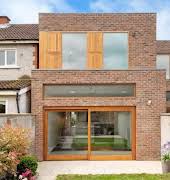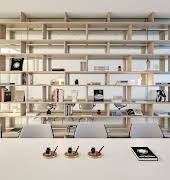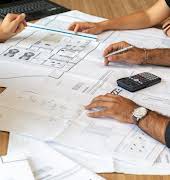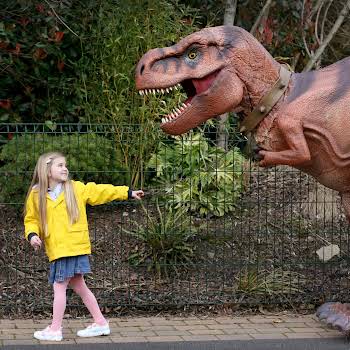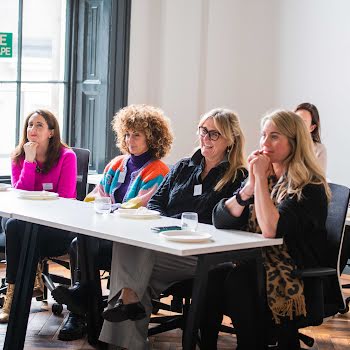
By Megan Burns
02nd Apr 2018
02nd Apr 2018
As our cities continue to expand and ample living space is becoming ever more of a luxury, Ikea are examining how we can make the most of tiny spaces. By 2030, it is predicted that 70% of us will live in cities, and so Ikea are taking inspiration from the challenges of space travel for a ‘micro-living’ collection of products. Working closely with NASA, they have even sent a team of designers to live in the Mars Desert Research station in Utah to learn from the restricted living conditions.
Designer Éléa Nouraud who is working on this project, initially announced last June, revealed that it now has a title, Rumtid, which means ‘Space time’. She also says that although the exact details are not finalised, this project is expected to be much more expansive that the usual 25-piece Ikea collection. It is due to be released in 2019.
Within the project, Éléa explains, Ikea has teams working on different themes, such as air, water, space, and food production. “All of that is linked in a way to space. It’s not like we’re designing for another planet, but we’re taking the knowledge of going to outer space and seeing how we can live in much smaller spaces, if we all want to live in the cities. It’s a compromise in a way, but at the same time you still need your home to fit what you need, and your personality.”
Ikea is already known for its clever storage systems that maximise space, but Éléa explains that despite their very scientific inspiration for this project, it’s not about making homes feel like clinical, purely functional places. There’s a focus on using pure materials, such as wood, and metal, rather than combining many layers of artificial substances, for both reasons of sustainability and aesthetics. When you only have a small space to work with, you want to make sure everything in it brings you pleasure.

Another major focus of the project is air quality. While in space, the same air has to be recycled over and over; in major cities all over the world air pollution is a huge problem. Although the design teams are thinking about the clinical world of space exploration, they also wanted to examine how people are already living in restricted conditions in parts of the world. Éléa and other members of the project team visited Tokyo, the most densely populated metropolitan area in the world.
She explains that air quality was a huge concern for people there. “With China on their doorstop, clouds of pollution arrive to Japan, so they have air purifiers in almost every room. You want to have clean air in your home, it’s where you spend a lot of time, and you raise your kids. So we’re working on products that help enable clean air, both to block polluted air from entering the house and purifying the air inside.” This kind of product is a new direction for Ikea, showing their increasing focus on how the way we live is changing.
Éléa predicts that as they become more populated, the structure of our cities will also have to adapt. “When we visited Tokyo, people are living in really small spaces, much smaller than we have here in Europe. But the thing is, they don’t really eat at home, they don’t socialise at home. So it’s a lot about going out to your local restaurants, and hanging around with friends in the park, and that becomes your garden as well. The dynamic of the home is changing quite a bit in the really big cities, where your home is no longer everything.”
It’s up to Ikea, then, to begin to design products for this new style of living. “You have to consider that people might have to carry things about a bit more, they need to be more transportable” she explains, “and also we’re changing homes much more often. Maybe we don’t feel so attached to one specific place, but more attached to how we organise the environment of the home. The feeling of cosiness is really important, and people still want to personalise their space.”

Their travel to Japan, Éléa says, also really helped them think in new ways about how we use our homes. She gives the example of the tatami room. “This is a concept we can’t really understand in Europe. It’s one room where you do everything. You relax, you eat, and you can sleep there. It’s made in a way that can be completely cleared out. The flooring is nice and soft, and it has huge storage spaces. When they have a newborn baby in Japan they don’t use the bedroom, they all sleep in the tatami room. They put the baby on the floor because then it’s not going to fall from anywhere, and it’s much more comfortable. They don’t need any baby furniture. These are the kind of things that I’ve learned through the project, and have opened my mind.”
One of the major challenges when thinking about how our living style needs to change is the future is sustainability. An issue that will only become more pressing as our cities become more densely populated, Éléa explains how when designing products, they consider the impact of even the tiniest details. “When designing a simple cup, if I make the material thinner, or I make it without a handle, because of how many are going to be produced, it actually has huge impact.
“If you don’t put a handle on it, that’s about 15g of clay that is not used for each cup that is produced. And then in terms of packaging, if you have a handle it takes up much more space, so you can fit fewer products on a pallet, so you’re actually shipping more pallets. It’s crazy, but you have to go down into fine details. When we visit the factories and see how things are made, you realise, do you really need the handle on that cup?” She explains that they also have to consider the lifespan of a product. Is this something that should last 2 years, or 25 years? Sometimes products are only expected to last a short amount of time, such as a small table for a student flat, and this should be considered in the design. For example, if it’s made out of cardboard it can be recycled at the end of its life, rather than sent to landfill.
With Ikea working on other innovative projects such as plans for urban farms and making ‘future’ hotdogs from insects, it’s clear that they’re focusing on how we’re going to live in the coming years, and not just from a furniture point of view. “Of course we’re designing for now,” says Éléa, “but we’re also thinking about how things will be in the future, and not just in your small four walls, but in the whole city.”
Featured photo: Ikea Today

